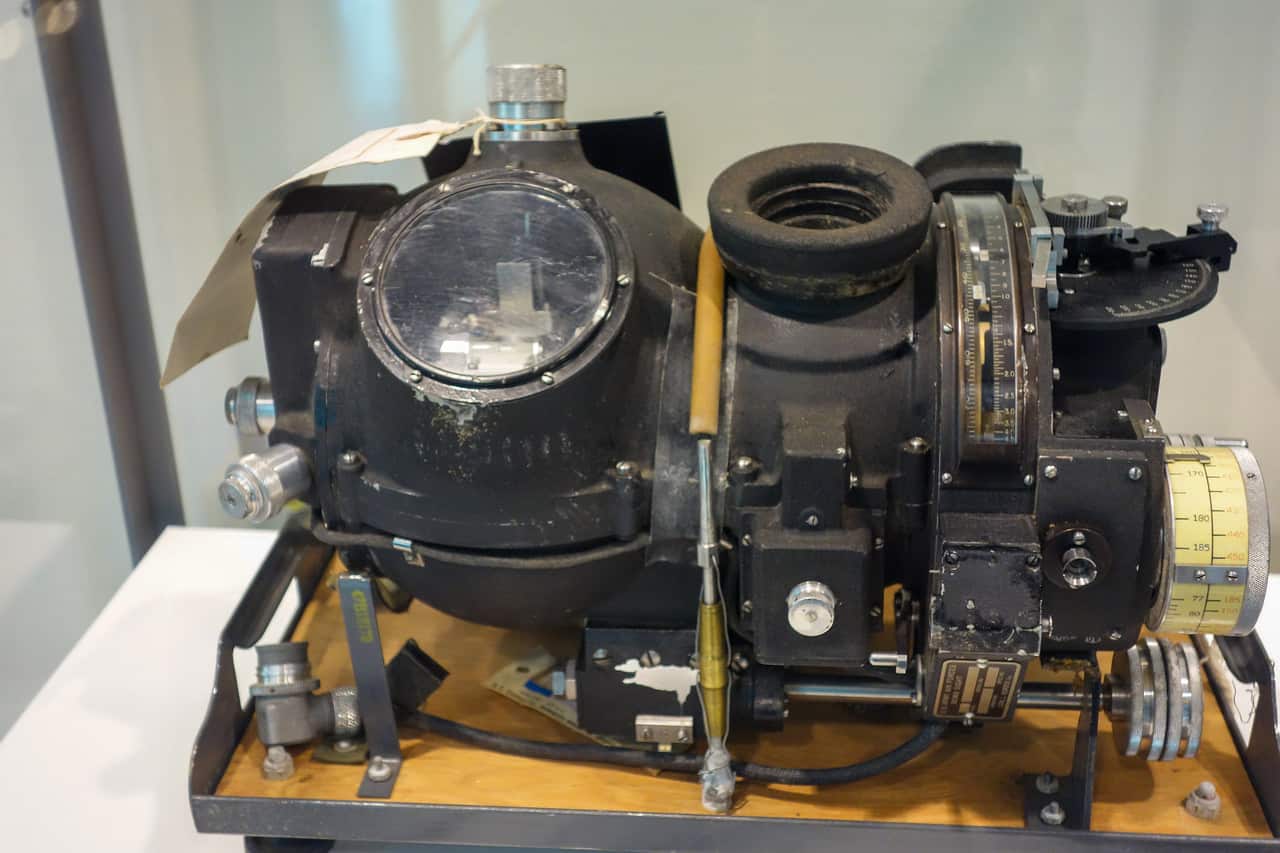


The Sperry S-1 bombsight was designed by Elmer Sperry, Carl Norden's former employer. It had several distinctions from the Norden, and some advantages. The Sperry gyroscopes spun at 24,000 rpm, compared to the Norden gyros which ran at approximately 8,000 rpm. This higher rate of rotation overcame the tendency to precess, so there was no leveling mechanism needed, or a requirement for leveling bubbles. In addition, the gyros ran off of induction rather than brushes; the carbon brushes in the Norden gyros tended to produce dust which fouled the bearings.
Norden Bombsight Manual Pdf
The Sperry ran off of 110V AC current compared to the 26V DC current used by the Norden. Whereas the Norden had all of its controls mounted on the right, the Sperry had the knobs for range located on the left and for azimuth located on the right, so that the bombardier could use both hands to adjust them simultaneously. The Norden used a manual geared system to correct for crosswind and drift, but the Sperry did this electromechanically.
The Navy would not allow the Norden to be exported, but did allow the Sperry to go to other countries such as England. The B-24 Liberator was being sent overseas (as the LB-30), and the Sperry was allowed to go with it. This led to a natural pairing of the S-1 and B-24, so almost all of the Sperry S-1's were in B-24 's. Approximately 5,000 S-1's were made, but the Norden dominated the bombsight market, and production of the S-1 ceased in 1943. Here is a video of what I believe to be is the only working Sperry S-1 in existence. The video seems long, but the second half is a tutorial on the bombing problem and solution:
- A Norden Bombsight at the Military Museum of Southern New England: One more Norden Bombsight at the Empire State Aerosciences Museum in Schenectady, NY: A Norden Bombsight & Manual at the Air Mobility Command Museum in Dover, DE: Another Norden Bombsight at the Quonset Air Museum in North Kingston, RI.
- Level the bombsight gyro, if necessary, by using the leveling knobs to center the bubbles in the spirit-type levels mounted on the gyro housing. Hold the bombsight manually to keep the line of sight on the target until the bombsight clutch is engaged to stabilize the bombsight.
- The Norden bombsight’s last combat use was in 1967, when it was used for dropping acoustic sensors along the Ho Chi Minh Trail in Southeast Asia. Exhibit Info The Norden bombsight consisted of two primary parts, the gyroscopic stabilization platform on the left side, and the mechanical calculator and sighting head on the right side.
Norden Bombsight Manual

Norden Bombsight Manual Pdf
Contributor: Alan Chanter ww2dbase The origins of the Norden bombsight can be traced back to 1921, when the US Navy asked consulting engineer Carl L. Norden, a Dutch-born authority on gyroscopes, to devise a gyro–stabilized base for their existing Mark 3 bombsight so that it could be used from high altitude. Deconstructing the Myth of the Norden Bombsight On our first day at Norden, we were awed and even scared to be in the very building that housed the mysterious, secret, powerful and famous Norden Bombsight It is a wonderful, superb instrument It has made an unsurpassed contribution toward the winning of this terrible war, and we are.